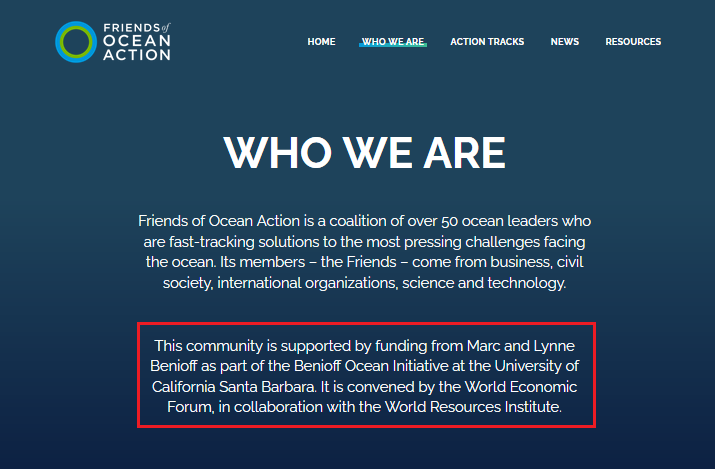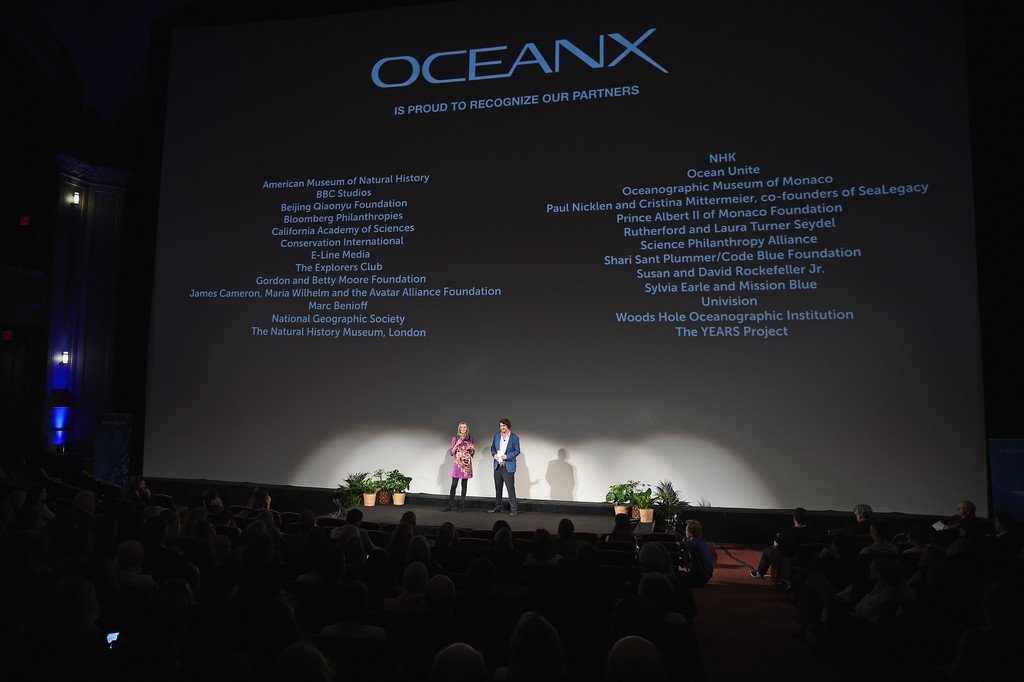Aug 16
20232
"Net Zero" Bill Gates Breakthrough Energy Coalition Breakthrough Energy Ventures Climate First Nations KOBOLD Metals Nuclear TerraPower Uranium We Don't Have Time
Global Nuclear Renaissance under Guise of “Net Zero”
June 25, 2023, The Economist: “America aims for nuclear-power renaissance – The Biden administration is pouring billions into the industry. The payoff isn’t certain”
WKOG: The nuclear renaissance is not confined to France. It is happening in the United States, Canada, Sweden, Australia, UK, India, Japan, South Korea, etc. Behind the veneer of a global “green” energy transition that places solar and wind at the marketing forefront, a nuclear renaissance is quietly sweeping the globe. While the relationship between public policy and public opinion regarding nuclear energy is closely monitored via think tanks and polling, influencers, social networks for climate, and youth are corralled and deployed to build support for nuclear energy. For the monumental task of obtaining social license, for a highly unpopular form of energy (and waste), fear is deployed as a means of obtaining consent, as is framing (language) and oppression. The sole focus on climate change (end of the world narrative) while the decimation of the natural world continues unabated, in which the only solution presented is that of technology (with zero attention to imperialism /militarism, the abolishing of NATO, etc.), the language of “net zero” (carbon markets, etc., nothing to do with zero emissions), coupled with the sky-rocketing cost of living amidst the greatest wealth transfer in history (anxiety, depression, oppression) – – through these means, civil society is being conditioned to accept a vast expansion of nuclear power. Nuclear energy is being re-branded as “green”. Billions of tax dollars are now being directed to extending the lives of at-risk nuclear plants – and for the first time – nuclear plants which have closed. (See Quebec and Michigan).
+++
The nuclear renaissance is a repeat of the fiasco of 1974
Published in La Relève et La Peste
Text prepared by Laurie Debove, January 30, 2023
Translation by Dennis Riches
Translator’s introduction
This interview published in January 2023 has a message for Oliver Stone and all the other cheerleaders of a nuclear renaissance. Oliver Stone’s new film Nuclear Now is just a rehash of Nuclear Then. The discussion below illustrates that there is nothing new about the nuclear renaissance being promoted as a solution to global warming and fossil fuel shortages caused by war. Anti-nuclear arguments were valid then and they still are now, and there isn’t really anything new to add to them. The first expansion of nuclear energy between the 1960s and 1980s also used finite oil supplies and wars as the rationalization for the rapid construction of nuclear energy. As soon as the nuclear construction boom was complete, we saw a decade of cheap oil during the 1990s and the world stopped caring about the issue for a while. As the interview below illustrates once again, plus ça change…
Introduction
The government is doing everything to revive the nuclear industry in France at a rapid pace, to the detriment of the public debate underway until February 27, a debate which is supposed to take account of the opinion of the population on this subject. To get a historical and technological perspective on this issue, we interviewed two people from Grenoble who belong to “Pièces et main d’oeuvre.” They have been active in the fight against nuclear power since the 1970s. We met in a Grenoble café, and in the text below their answers have been edited and compiled into one common voice.
LR&LP: Could you introduce yourselves and your organization?
P.M.O: “Pièces et Maind’oeuvre” is the name we have given to the activities we have been carrying out since autumn 2000 in Grenoble. It is a critical survey to understand both the city in which we live, the first technopole in France, entirely shaped and driven by innovation, that links research and industry; and it’s an attempt to understand the time in which we live, which is that of innovation.
The whole economy, our social organization, and the reason for living now is innovation. It is the idea that we always need something new in terms of techno-science, the engine of the economy and growth, to concretely organize our lives. This critical investigation led us to consider that technology is the major fact of our time. We produce ideas and participate in demonstrations because we believe that ideas can change and transform the course of the world, that they can oppose technology.
LR&LP: What led you to look at nuclear, and what are the biggest pitfalls you found?
P.M.O: The interest in nuclear power long predates the creation of the collective. I myself am an offshoot of the anti-nuclear movement that began in 1945 with Hiroshima and Nagasaki, where immediately the left and the communists declared that it was scientific progress with a French origin, while Albert Camus denounced it as a horrible development, that we would have to choose between collective suicide and rescue.
Throughout the 1940s, 50s and 60s, a divisive critique of nuclear power developed. The communists were launching a peace movement that is anti-nuclear because only the United States had the bomb, and they did not want to let them have such a strategic advantage over the USSR and the socialist camp. But in reality, the Soviets were clandestinely preparing the Hydrogen Bomb, even more powerful than the Atomic Bomb.
The struggle was therefore instrumentalized, and it was at this time that US President Eisenhower launched the program “Atoms for Peace,” saying that the atom can also have a civilian application in the form of nuclear power plants and research. It therefore proposed technology transfers from the United States to more than twenty countries that wanted to manufacture reactors.
A new divide was emerging: many people including Murray Bookchin, André Breton and his anti-nuclear committee in France said that it was abominable because they saw very well the confinement that it implies. For them, we were putting humanity in a cage that it would not be able to break out of for thousands of years or more. The moment we manufacture nuclear power, we manufacture the consequences of nuclear power and especially its waste.
As we supply the whole of society with nuclear power, we must maintain a scientific clergy of nucleocrats because it is a very complicated and dangerous technology, and on the other hand we must protect these nuclear power plants, mineral mines, transport, and waste with a dedicated militia because we do not want it to fall into the wrong hands.
With the civilian atom, there is therefore an entire electro-totalitarian society that is being set up with a state apparatus, a police, and a particular political organization. No more dreams and utopias of self-management or anarchy. Nuclear waste cannot be managed by just anyone. There is a ratchet effect in it where there is no turning back.
And this is a completely different type of criticism. It is the matrix and the origin of the modern ecological movement that started again at the end of the 1960s with in particular Pierre Fournier and the magazine La Gueule Ouverte (The Open Mouth), Giono, Ellul, Charbonneau, Camus, Breton, Pierre Fournier and small associations whose names have been completely forgotten: Jean Pignero, Emile Prémilieu, Esther Davis, Solange Fernex, all these people who in the 1950s and 1960s struggled to investigate radioactivity, radium, and ionizing rays.

Illustration by La Gueule Ouverte
LR&LP: Here we are in 2022, and the Autorité de Sureté du Nucléaire (Nuclear Safety Authority) has launched an alert on the failures of the French nuclear fleet. Having seen both the establishment and the evolution of this fleet, was this predictable, and what do you think of the French nuclear recovery plan, imposed by the government, while we see that the [nuclear power plant] EPR of Flamanville has ten billion euros of additional cost as well as twelve years of delay in its construction?
P.M.O: That nuclear power plants wear out, like all factories, is a banality. The life cycle of a nuclear power plant is 100 years on average, from the time construction starts to the time it is decommissioned. Nuclear power costs a fortune, but no matter how much cheap French electricity is promoted, it is a lie. Over time, the state has financed EDF less so we have maintained the plants less. We have fewer trained specialists, and the private sector has not taken over of the cost.
Today we are witnessing a repeat of what happened in 1974 after the Yom Kippur War, when Arab countries punished the West by tripling oil prices. We did not have oil, but nuclear was an alternative, so Pompidou, Giscard d’Estaing and the Prime Minister at the time, Messmer, launched a plan to nuclearize France to compensate for the deficit in oil imports. The uranium came from Niger. We had the skills because the CEA existed since 1945 [for the bomb program]. EDF placed the orders and they manufactured nuclear power plants at a rapid rate.
It is striking to observe how Pierre Messmer’s speech on TV in 1974 and Emmanuel Macron’s speech in Belfort in 2021 are like twins! The recovery is justified by a drop in supplies: at the time the cause was the Arab countries and today it is the Russia-Ukraine conflict.
In the same way, there was an increase in demand at the time because people were forced to equip themselves with electric household appliances, and today it is the means of electric transport and gadgets like smartphones that create this additional demand. On the one hand, industry creates the demand and therefore the problem, and on the other hand it comes with the solution that the population cannot refuse.
The surprise is that we re-apply the same old methods with the same old arguments. It is a headlong rush to ignore the current disaster. We cannot have such a demand for electricity. It is neither sustainable nor reasonable.
We are embarking on a replay of the program of forty years ago rather than confronting an element that is the hardest physics: the question of the entropy of energy and matter (theorized by Nicholas Georgescu-Roegen). It is the key point denied. There is also the denial of the poisoning of the environment with radioactivity. We live in a world where radioactivity is anthropogenic. Physics teaches us that this is not going away. We could have anticipated all this.
LR&LP: History repeats itself, and yet according to a survey conducted by Harris Interactive more than 1/4 of French people have no idea of the number of reactors in service, and they underestimate the size of the French nuclear fleet. Nor do they know that nuclear power accounts for only 20% of final energy consumption among consumers in France [energy as opposed to electricity]. What explains this popular lack of knowledge about nuclear power? And why is it important for civil society to take up these questions usually reserved for specialists?
P.M.O: This question refers to what a city is and what a citizen is. In Athens, in the fourth century BC, citizens (not slaves) were deemed competent to judge all affairs of the city. They meet on the agora, and the technicians were subordinate to the citizens. Decisions were made collectively.
All citizens were informed and lived in a society where there was a relative general understanding of technical problems. Technology had not reached such a stage of complexity that the issues were too difficult to understand for the majority. There were still no experts who put a screen between political decisions and facts.
Later, a technocratic class developed. In the same way that technology has become the real politics of our time, the real ruling class of our time is technocracy: the class that has produced and is the product of technology (engineers, business leaders, some elected officials). This class of power constantly wants an increase in power, either out of passion for knowledge, or because it sees very tangibly what it can be used for. Think of such people as Louis Néel, Nobel laureate in physics in 1970, who founded the CEA Grenoble: science for industry and innovation.
These people are keeping citizens in ignorance. The elected official will then surround himself with scientific advisors that he cannot control since he does not know how to solve their equations. In Grenoble, elected officials are often technocrats themselves. There is a homogeneity of the ruling class around goals, reasoning, and way of thinking. They themselves do not consider themselves competent for everything: computer science is different from chemistry, etc.
The basic citizen has integrated this and understood that he does not understand anything, or not much. The citizen therefore relies on those who know.
Furthermore, to have electricity, you just have to press a button at home. This has made the understanding of the production energy a virtual understanding. With this phenomenon of extreme centralization and the nuclear power complex, no one knows what it costs to produce electricity.
When there was a small hydropower plant for a village in the mountains, it was in front of everyone’s eyes, so the inhabitants kept a certain control and awareness of what they produced. Today we have a total loss of this autonomy. This is why the technocratic system and technology have the power to change the world, yet it is not compatible with participatory democracy.
LR&LP: However, a public debate has been launched to ask citizens for their opinion. In your opinion, can participating in this public debate allow the French population to regain control over the decisions made on energy production in France? If not, what should everyone do for an informed debate on nuclear technology?
P.M.O: Public debates are like the bullfighter’s cape. The authorities know very well that there will be rants, foghorns, banners, and they find it very good since then the protest is confined to the “public debate”. Chantal Jouanno, the president of the National Commission for Public Debate (CNDP) said the banners are welcome in 2022 because of a precedent in the history of French public debate.
In 2009-2010, the government launched a major public debate on nanotechnology in France whereas those of the CNDP were normally targeted more locally. This time, the French were asked about a much broader social issue, while Nicolas Sarkozy had launched a second nanotechnology R&D center in Saclay. Political decisions had already been taken a long time before.
We then decided to dismantle this communication operation to show how it works, how it is prepared, and who manages the public debate. Then we launched a campaign to sabotage these meetings, which were in our eyes a firewall since the second center was already being built. Twelve out of seventeen meetings were cancelled. At the time, the CNDP and the government decided that the CNDP would never again be used for such broad subjects.
A yes or no outcome will have no impact. Sociologists themselves have defined public debate by saying “involvement is enforced acceptance.” For us, participation is therefore accepting, as we have written about extensively. To believe that they will take into account the opinion of citizens on such a vast social project is illusory.
The only real public inquiry on nuclear power ended in a fiasco. That was in Plogoff. The Bretons there refused the public inquiry and fought for weeks against the police. Every evening, hundreds of people gathered to throw stones and slurry because, for them, every form of pseudo-consultation was a smokescreen. This explains why there has never been a nuclear power plant built in Plogoff while they have been built everywhere else.
LR&LP: Power is in the hands of technocrats. “Participation is enforced acceptance.” Therefore, how can a citizen regain an influence in energy production?
P.M.O: When we talk about an industrial society where everything is interconnected, where survival depends on the connection to the technotope, it is almost illusory to ask the question in these terms. You would really have to have the means to live independently to do that. At the margins, some manage to disconnect from the EDF network, but how many can really do that? Only a few who have a little space and means, autonomy in their way of life and their habitat. These initiatives must be supported and encouraged, but they do not reflect the capacities of the majority.
Many people are aware of the fact that we have been taken hostage. When we talk about “the machine,” that’s what we’re talking about. It is almost illusory and utopian to think that we can avoid being incarcerated in “the machine.”
The only force likely to turn the tide would be a collective realization that it is not sustainable to continue to consume so much energy, physically and materially, because of entropy and its effects. We would then have to decide to get rid of this energy-intensive and material-intensive lifestyle, and give up certain habits, but it remains an abstract goal.
The problem is that people do not necessarily demand democracy. They are like passengers on a train who, of course, don’t want to be able to drive it. Most people just want a society that works. The question is how.
Further reading
The latest book published by Pièces et Main d’oeuvre:




































































































































































